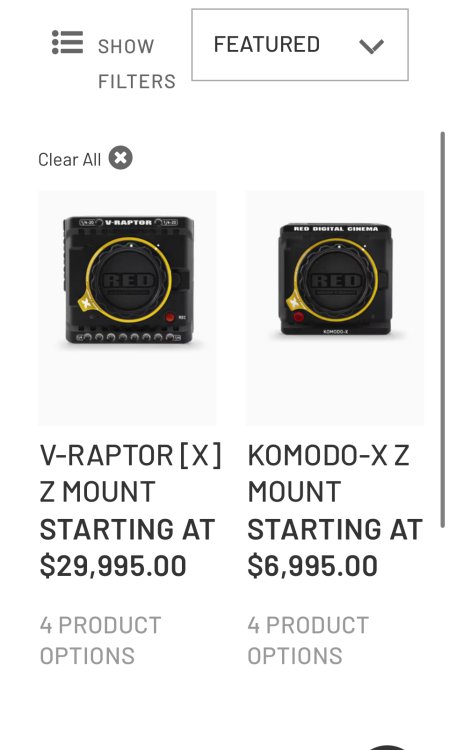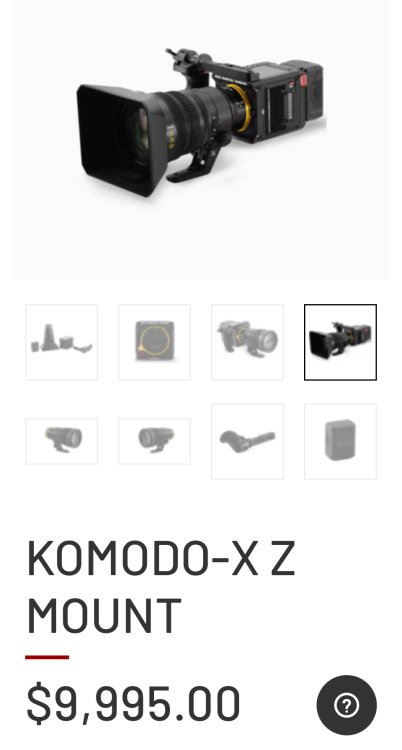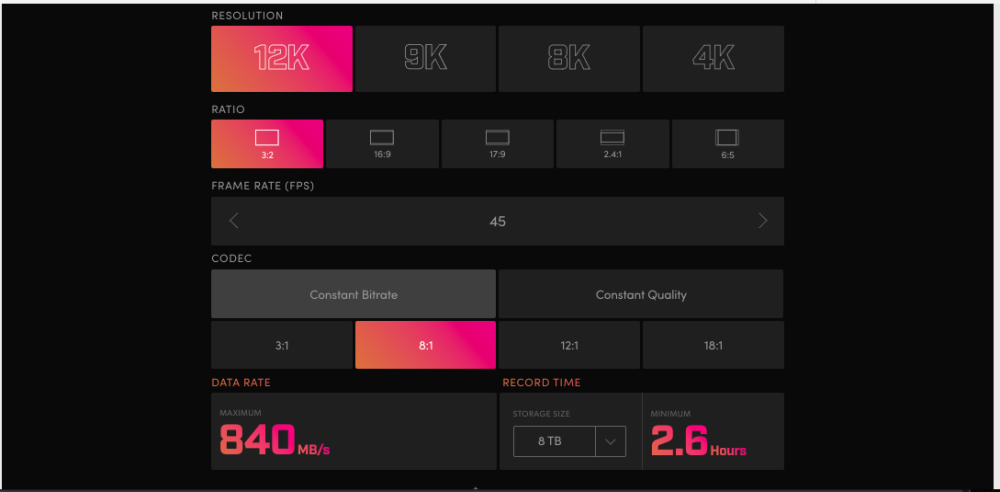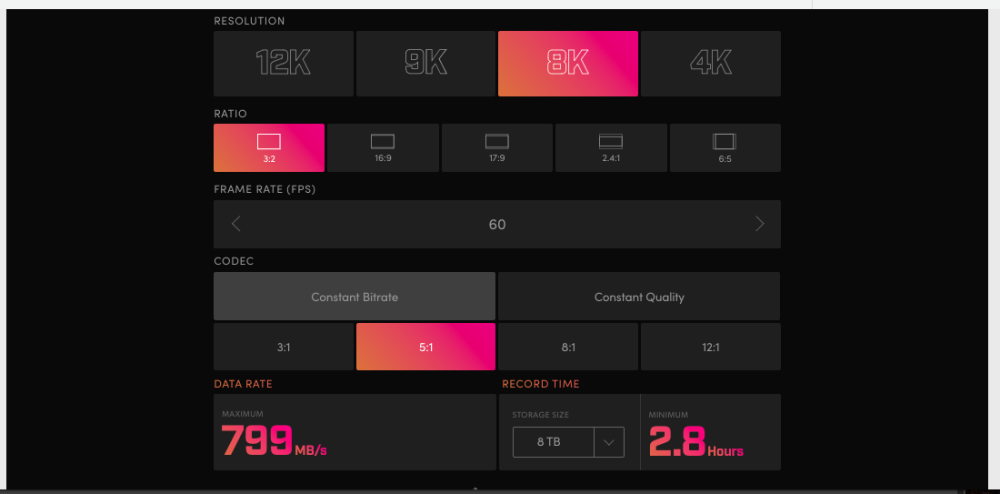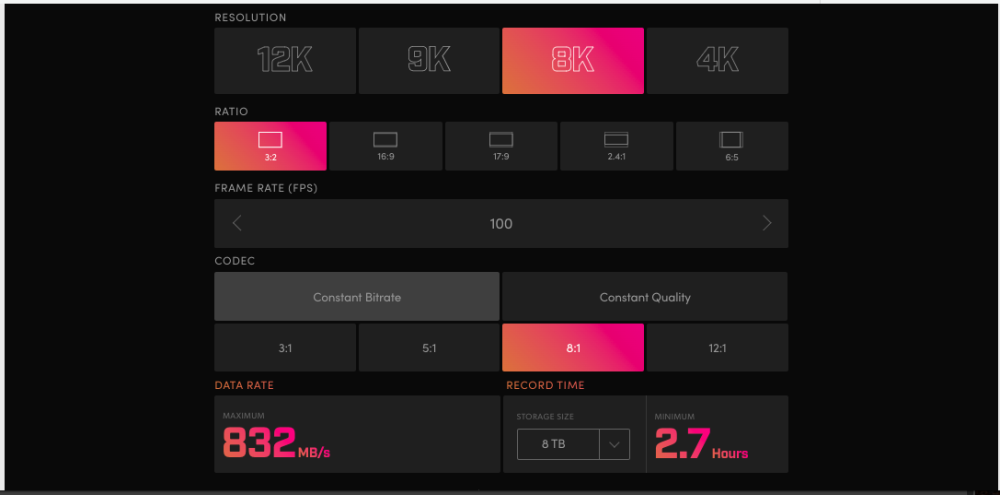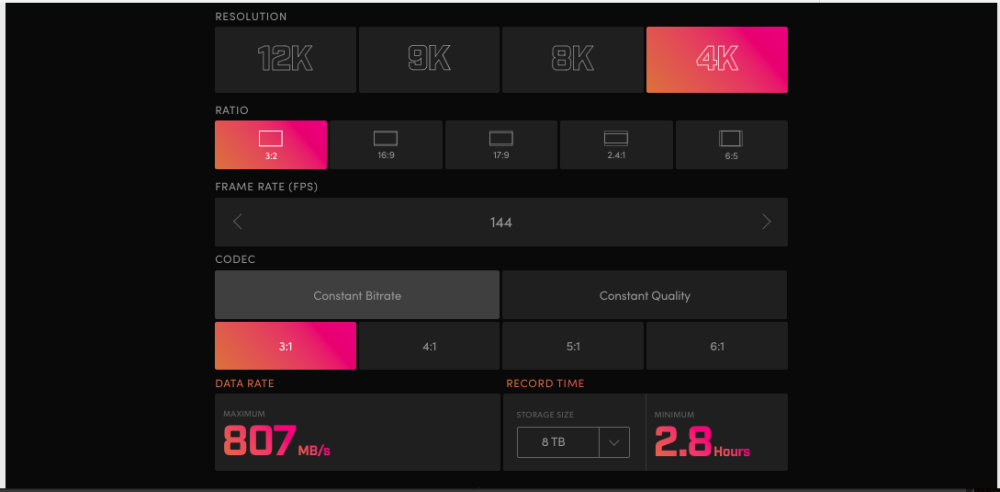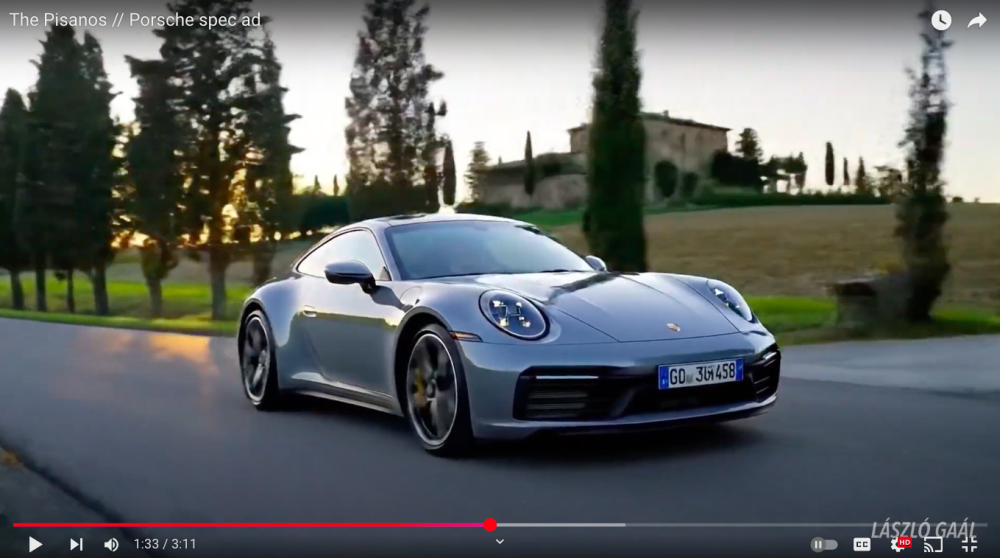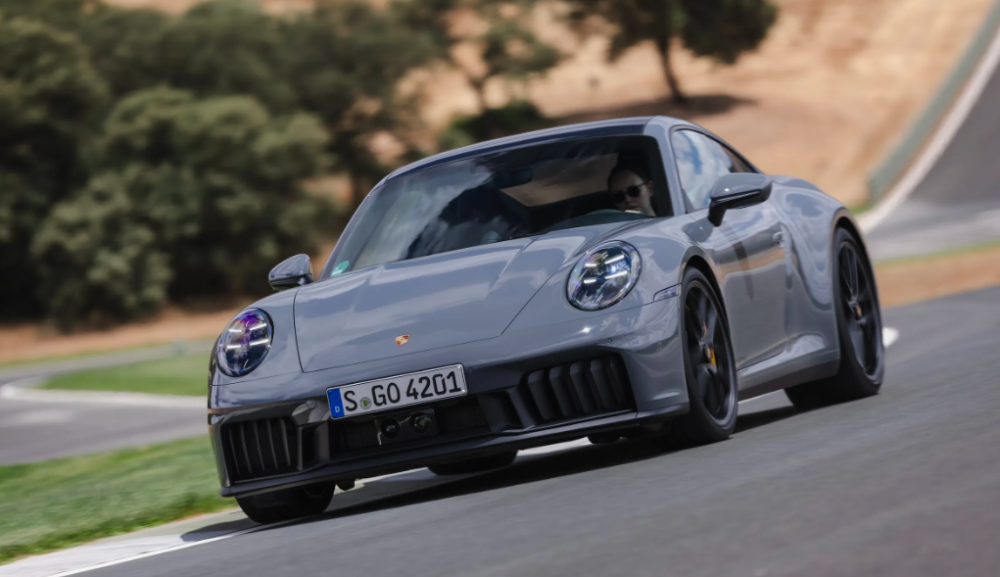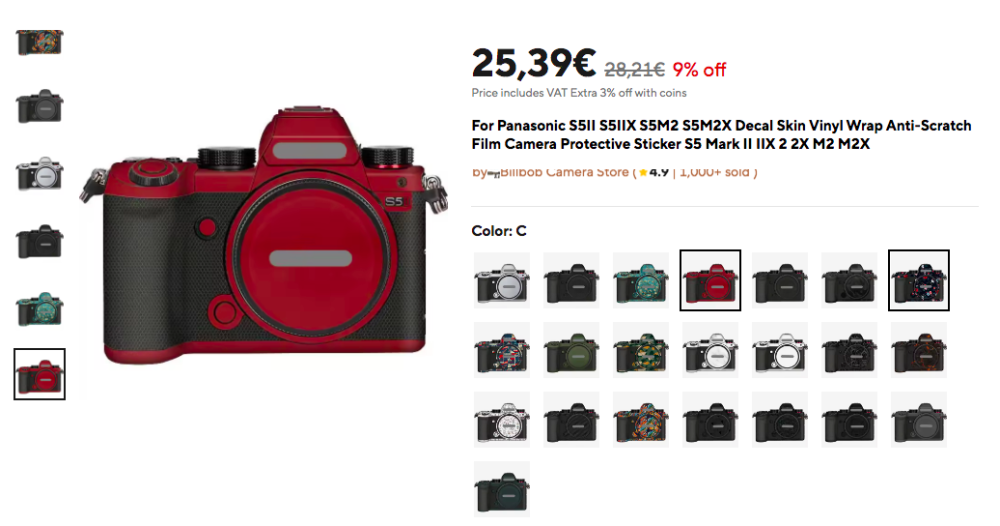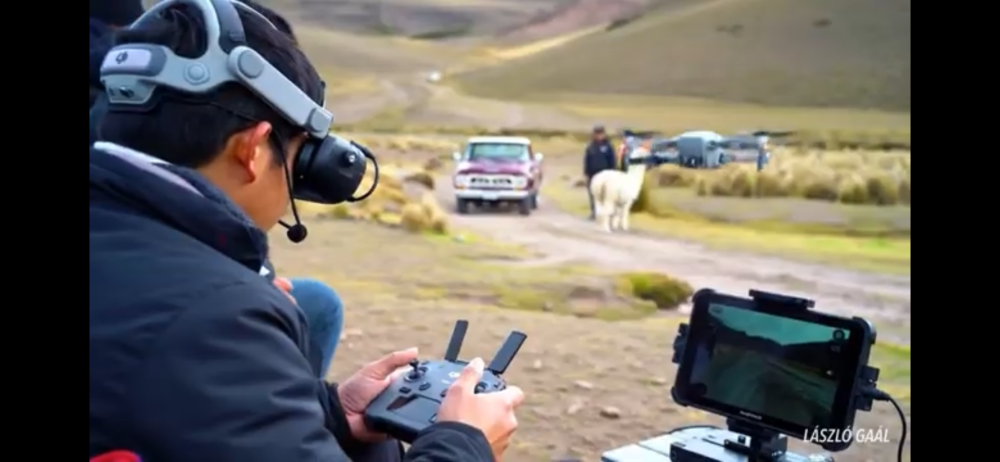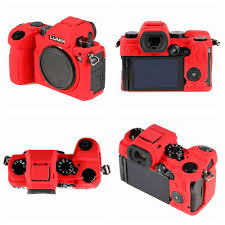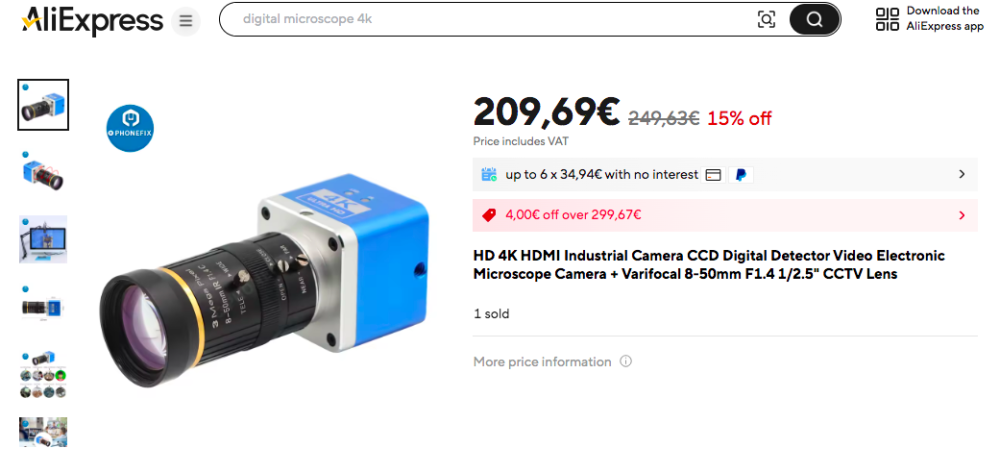-
Posts
5,964 -
Joined
-
Last visited
Content Type
Profiles
Forums
Articles
Everything posted by BTM_Pix
-
Giving them the benefit of the doubt - as CVP are not usually into the breathless hyperbolic nonsense- it is the greater flexibility of the Z mount over the RF mount that opens up new paths for more people to move into RED. Both Z and RF can adapt EF with AF but the Z offers the same with F, E and even Leica M with adapters. Stretching a point, even manual MFT lenses can be used with the K-X via an additional cheap E>Z adapter as most of them will cover Super35. That’s a lot more existing lens collections that people can use and could tempt more people in who have been reluctant to lock themselves into RF. But, yeah, whilst it’s very interesting (a compact cinema camera with compact M mount lenses with AF for example) and a more flexible option, it’s not really in the “this changes everything” territory. Changing the mount AND a price cut further towards PYXIS territory would’ve been though !
-
The first Z mount RED cameras have been released. There is also a bundle with the new Nikkor 28-135mm Power Zoom lens for under $10K. Not sure how appropriate that full frame lens is focal length wise for a Super35 camera like the Komodo X but here we are. https://www.red.com/komodo-x-z-mount-black?quantity=1&kxzpackage=2
-
Slashcam have produced an AF, stabilisation and colour profiles test set shot with the longer of the two kit lenses, the £300 50-250mm.
-
Yeah, and he will be saying that the amount of people who are riding round Japan on these e-bikes means that they are making far more dosh designing appropriately sized panniers and baskets to be arsed about designing new appropriately sized MFT cameras.
-
Cheaper than the Leica jackets they put on the Lumix cameras though !
-
The £70 a year software sub is the other one but apparently you get a year's free when you buy the grip.
-
Here is a list of the 75 FF and APS-C cameras that WEX sell for the same or lower price than the OM-3 https://www.wexphotovideo.com/compact-system-cameras/?p=categoryPath%3A"cameras>compact-system-cameras"&filter=SensorFormats_uFilter%3A"Full Frame" OR SensorFormats_uFilter%3A"APS-C"&filter=sellingPrice%3A[400 TO 500] OR sellingPrice%3A[500 TO 600] OR sellingPrice%3A[600 TO 700] OR sellingPrice%3A[700 TO 800] OR sellingPrice%3A[800 TO 900] OR sellingPrice%3A[900 TO 1000] OR sellingPrice%3A[1000 TO 1100] OR sellingPrice%3A[1100 TO 1200] OR sellingPrice%3A[1200 TO 1300] OR sellingPrice%3A[1300 TO 1400] OR sellingPrice%3A[1400 TO 1500] OR sellingPrice%3A[1500 TO 1600] OR sellingPrice%3A[1600 TO 1700]&sort=sellingPrice desc&rows=96&start=0 I'm curious about the rationale for anyone walking in there and choosing it over a sizeable number of those on that list. There is only so far the "well they've got the lenses so we've locked them in to the format" thinking will stretch when you are charging more for less.
-
Leica deservedly get a lot of stick for putting Panasonic cameras in posh overcoats but I think this is pretty nice. They've more or less sawn the grip off an SL, put a MagSafe on it and brought a very ergonomic integration with their LUX camera app. Yes, of course its £260 and only works with their subscription only LUX app but it is a package of transformational beauty when it comes to iPhone photography.
-
As per the latest revision of the user manual, the USB-C ports are reserved for the EFV/PYXIS monitor, cellular streaming connection, firmware updates/software control and “accessories”. The “accessories” aren’t defined but the presumption would be that it refers to the existing focus controller and zoom demand USB-C accessories that BM produce.
-
It wouldn't bother me either. Using their calculator, this is what that max 45fps at 12:K 3:2 BRAW 8:1 looks like. Using that as the guide, bumping up to the maximum 60 fps before the B-Mount 24.8v battery is needed would enable this in 8K with some headroom even with the lower compression of 5:1 That would be absolutely fine for me, particularly when the rolling shutter in 8K is down to global shutter territory at 5.5ms. Upgrading the battery to 24.8v B-Mount would open up the rates above 60fps so keeping the data rate within spec would get this at 100fps at 8K And dropping to 4K would get the full 144fps as well as a better compression ratio of 3:1. All of that is theoretical based on the max data rate BM quote for CF Express and there may be as yet undocumented restrictions so it remains to be seen. So its perfectly viable with the stock media option of using CF Express and the far more affordable 14.4v V-Mount battery solution and there is even an argument to say that if over 60fps is not a fundamental necessity and only a very rare requirement then hiring a B-Mount battery is a viable (and client chargeable) option. The compromise play would be to buy a bi-voltage B-Mount battery such as the SWIT BIVO which is switchable between 14.4v and 24.8v to give you the boost when needed for the higher frame rates. Looking at comparable SWIT 98wh batteries, the BIVO is around £350 more expensive than their regular 14.4v V-mount so the best way to think about it is you would basically be paying £350 for a high speed license. Not bad really.
-
There is no support (currently at least) for USB-C recording on the Ursa Cine 12K. The situation for CF Express Type B has been clarified by BM on their latest support bulletin here for approved cards : https://www.blackmagicdesign.com/uk/support/faq/59051 Long story short is that they have nothing on there that goes above 45fps at 12:K 3:2 BRAW 8:1. There is a data calculator on the product page for the different permutations. https://www.blackmagicdesign.com/uk/products/blackmagicursacine However, there is also the caveat that for any frame rate above 60fps (at any resolution) the camera requires powering from a 24.8v B-Mount battery. So for anyone looking at shooting at the highest frame rates and resolutions, both the Media Module and a B-Mount are non-negotiable so an additional £2K should be budgeted. That is still an almighty good deal for a camera with this performance though and I think the value proposition of the Media Module is good enough to mean it might well be considered an essential purchase by a lot of people anyway. One thing that I find intriguing is that BM list a mount adapter for Hasselblad HC lenses but offer no more information about it at the moment. I still have a set of HC lenses that are orphans after the demise of my H3D-39ii and I'm very curious about how they have managed to get electronic control of them. Currently, only Hasselblad themselves in their H to X adapter and FujiFilm (the original manufacturer of the HC lenses) in their H to GFX adapter have products that do this and whether it is limited to aperture control but also encompasses focus control is undocumented. I'm not saying that this compatibility would make me buy one but, bearing in mind it has a dedicated Stills button, then being able to bring back a collection of fantastic set of lenses (albeit with a smaller FOV) that work more or less natively with a 100mp body that also happens to shoot RAW video would be worth considering. I'm not being serious of course as that would be an insanely flimsy justification to buy one * * Note from wife - Yes he is being serious.
-
The only way it won't achieve being indistinguishable from real video in the next few years will be if its actually outright banned. Now that is something that I thought was a complete long shot until this DeepSeek thing reared its head. Now that the usual suspects may not make their expected humungous financial and power gains from AI they might well get the cult leader that they own to try and do exactly that. Get him to threaten it with yuuuge tariffs and/or the invasion of Knotty Ash to plunder its remaining deep mine jam butty resources etc. In terms of what AI means to creators of what will likely be called "legacy content" before too long, this video is a sobering look. Basically, a man does a live stream of completely improvised music using modular synths (the very nature of which mean even he would be hard pushed to completely repeat it) and two years later it gets five copyright strikes from different artists and labels, a lot of which are for allegedly infringing copyright on pieces that they made after he performed and published the stream. In particular, the final one - at the very least - looks to be completely AI generated from the music to the artist to the social media content. Music is a couple of years ahead of video in being "blessed" with AI tools so expect this sort of stuff to be happening in the video world soon where someone makes a video with a prompt that uses elements of your content and similarly flawed automated copyright infringement tools flag your original video from years earlier and demand you give them an 80% revenue share for the privilege of not having your channel getting a strike.
-
With the recent price drop, the Pocket 4K is now under £1K new and that has pushed used prices below £700 so they are now far more affordable. It shoots ProRes as well as BRAW so theres no need to get involved with Resolve and even if you did want to shoot BRAW there are now direct importers into FCPX. As you are shooting multi-camera for live events etc then the BM range are absolutely hands down better options than any other range for work like that. With the ATEM Mini Pro series starting at under £300 you can do the live camera switching (or even just very efficient multi camera monitoring to a single monitor) and have full remote control of the cameras as well. If you get three used P4K cameras and the ATEM Mini Pro, then its £2.5K for the whole integrated multi camera system and the cameras are obviously more than capable in the cinema role too. Particularly as it is roughly the price of a single X-H2S. Without the live aspect then options such as the X-H2S etc are a good choice of course but as an all round system for fulfilling the different roles that you've listed then the P4K x3 /ATEM Mini Pro is far more suitable in my opinion.
-
The corruption on the license plate coincidentally features a fragment of the plate of the car that images of may well have been used to train it with. The car is a Porsche factory one that was provided to reviewers so enough images of it from different sources to train it. Could just be a massive coincidence of course ..... I think a new parlour game in the upcoming years when generating this stuff becomes more readily/instantly available will be image makers entering a specific prompt describing one of their own images that they have put online and determining how much has been lifted from their work based on the output that comes back.
-
Yeah, another too much haste cock up from myself there. Oddly enough, the colour choices for the silicone covers for the S5ii don't extend to red, with the nearest one being a bit of a life vest orange tone. So, even in the world of silicone covers, there is sneaky product differentiation going on. The vinyl wraps are the closest to red for the S5ii and I have to say that I think this one looks a bit more fetching to me anyway.
-
The voiceover was real. This is the card at the end of the video. Well, there’s the rub. Whatever it was trained on was certainly very real. Looking at this frame, I’m pretty sure if you went through enough of PotatoJet’s YouTube content you’d find the ,shall we say, “inspiration” for it.
-
They are between £10 and £25 on Aliexpress and eBay but this is one on Amazon https://www.amazon.co.uk/Panasonic-Mirrorless-Silicone-Protective-Protector/dp/B09V7HZ3RW
-
Indeed it was.
-
-
This announcement leaves me about as moist as one of their cakes.
-
All this needs is an old Ninja 2 to make an interesting DIY CCD ProRes shooting cine camera with a smaller sensor 😉 https://www.aliexpress.com/item/1005003731513738.html
-
It’s likely way too niche for them but I’d love to see the Chinese lens manufacturers like 7Artisans etc do some C mount Super 16mm lenses. It would avoid the eBay crapshoot and based on their Super35 prices they could probably produce some good stuff for circa £150 a pop or even less.
-
Thanks for posting that, it was really interesting.




